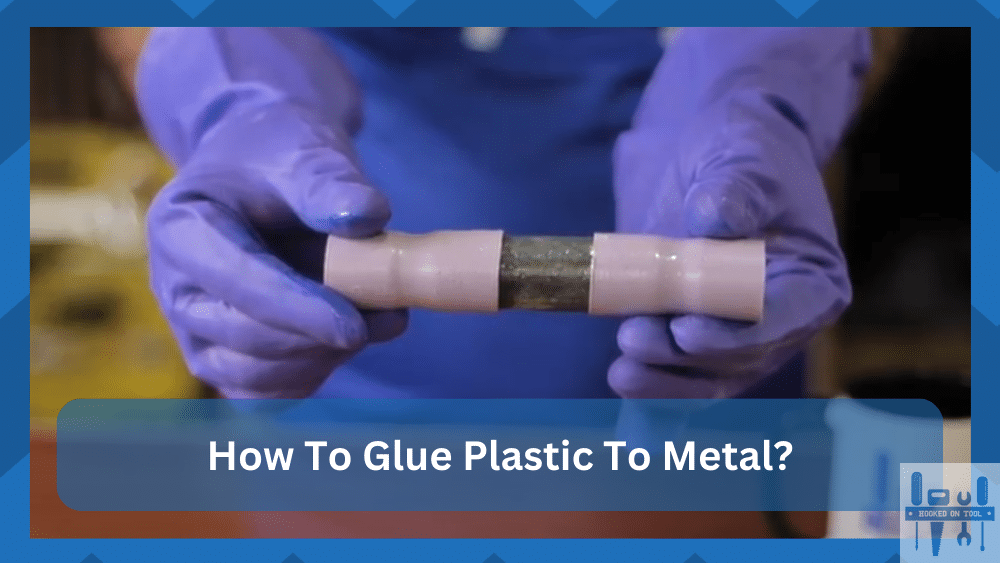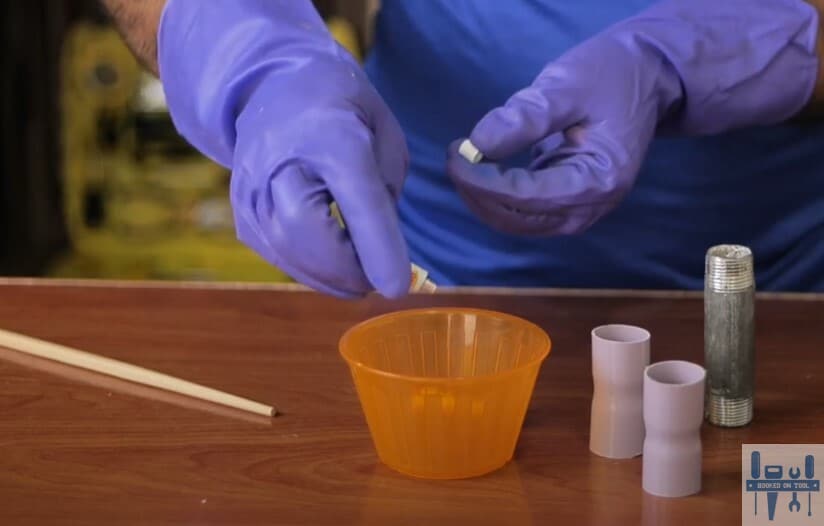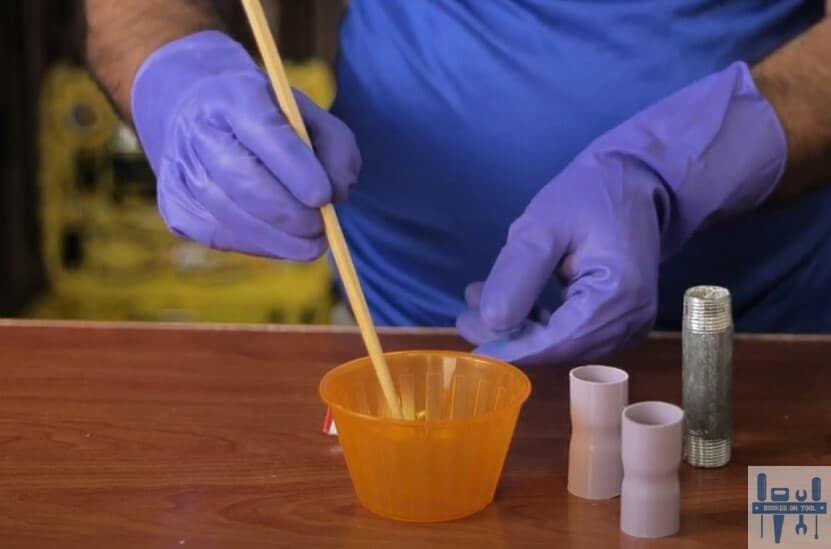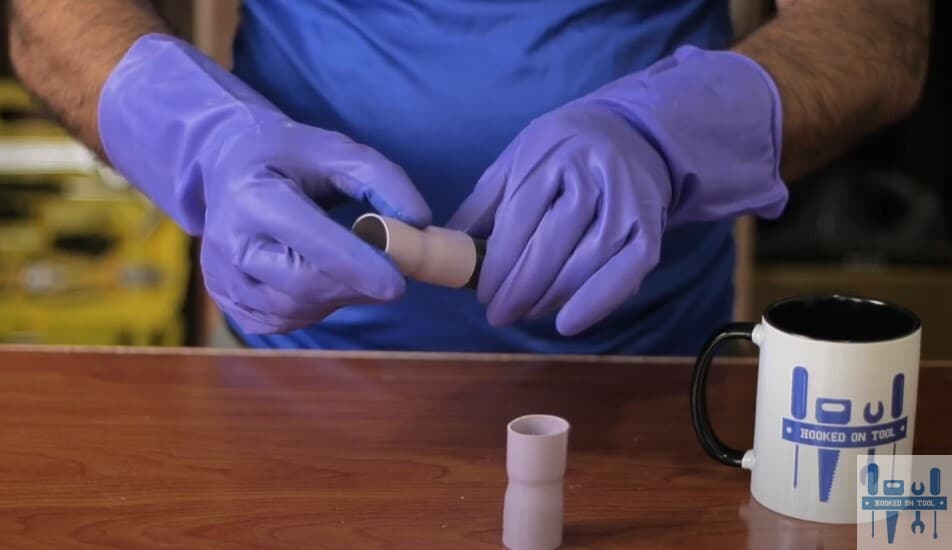
When I was first learning the ropes, it was a hassle to figure out how to glue plastic to metal. I mean, both are different materials, and the standard glue didn’t really work. So, I had to spend some time with the experts in my local workshop.
Luckily, they weren’t too opposed to the idea of letting me experiment, and I learned a lot. The mistakes that I made were that I wasn’t using the right type of adhesive, and even when I did, I forgot to prep the metal and plastic surfaces.
These mistakes cost me a few weeks, but I can just breeze through any project involving metal and plastic now. So, if you’re also concerned about how to glue plastic to metal, I can help you out.
How to Glue Plastic to Metal?
Whether you have to connect a tap to a valve or fix a broken key, you can use a solution of superglue and magic glue to create a strong adhesive. Some people also move towards epoxy solutions and acrylic adhesives, and everything boils down to how strong you wish the bond to be.
The solution of super glue and magic glue was more than enough for my projects, and I didn’t have to hassle as much when trying to pair up a PVC pipe with a metal pipe. So, if you’re trying to create a similar bond, just use the solution I did.
Materials Required
- Super Glue
- PVC Pipe
- Metal Pipe
- Magic Glue
- Plastic Bowl
- Wooden Stick
Safety
Now, the only thing that you’ll need here is hand protection. Believe me, the last thing that you’d want is for the adhesive to get on your hands. Aside from the hassle of getting it off, the adhesive can damage your skin, and you shouldn’t try to power through the project if you don’t have rubber gloves.
Step 1 – Transfer Super Glue & Magic Glue to A Plastic Bowl
Depending on how much adhesive you need, you can easily transfer the tube of super glue and the magic glue to the plastic bowl. You can easily open up the cap on both of the tubes and use the pin or needle attached to the cap to make an insertion point. Otherwise, the tube will clog up.
After transferring both tubes to the plastic bowl, you can start mixing them up. I’ve found that a thin wooden stick works the best, but the viscosity of the magic glue does put pressure on the stick. So, try getting a wooden piece that won’t break as easily under pressure.
Step 2 – Keep Stirring
A common mistake that I’ve noticed over the past couple of weeks is that some people would just stir the solution for a few seconds and then proceed to apply the mixture. That won’t create a strong bond, and you need to keep stirring for about 4 to 5 minutes.
If the solution is in large quantities, you’ll have to spend even more time. Otherwise, your DIY project will come falling apart once you’re done applying the adhesive.
Step 3 – Apply The Adhesive
Once the solution is ready, use the wooden stick as an applying device and cover one end of the metal pipe with this solution. Make sure that you’re applying the solution to all sides, and then repeat the process for the inside layer of the PVC pipe.
After thoroughly applying the solution, you can then let the metal pipe rest for a few minutes. This will dry up the solution a bit and make the grip stronger. Some adhesive will leak out of the crevices, but that shouldn’t have a huge impact on your project.
Now, you’ll also find some experts applying the solution directly with their fingers. This gives them more control over the thickness of the layer, and you can do the same if you’re wearing rubber gloves. Keep in mind that wearing rubber gloves is a must, and you can’t ignore this precaution.
Note: If you let the solution rest too long, then it will dry up completely. You will have to then use a heat gun to reactivate the solution, and there aren’t any other ways around it. So, have that in mind when you’re struggling to manage the solution.
After activating the adhesive, you can connect the metal pipe with the PVC pipe and then let them rest for a few hours. Make sure that the grip is strong and you’re not just loosely fitting the metal pipe into the PVC pipe. Otherwise, no adhesive will be able to help you out.
Step 4 – Test The Grip
Lastly, you need to make sure that you didn’t mess up by checking the grip between the metal pipe and the PVC pipe. I’m not saying that you need to tug the pipes or smack them on the workbench. Just lightly lift the metal pipe and see if there is any wiggle room between both pipes.
If you do find there to be a slight wiggle, then the bond is not strong enough, or you need to let the solution rest for a few hours. However, if you’re sure that the solution has been resting for a long enough period, then now might be a good time to get through the project from scratch.
If you’re working with some sensitive materials like a car key, then the process doesn’t have to be this complicated. Just apply some super glue directly from the tube to the key head and then shove in the metal piece.
Hold the metal piece in place for about 5 to 7 minutes, and you’re sorted. There is no need to complicate the situation for yourself, and this method will be enough to have you sorted out. Alternatively, there is nothing wrong with going to your local hardware store and asking the experts there to help you out.
Asking for help is never a bad idea when you’re first starting out, and you shouldn’t hesitate to seek help when you’re confused. Otherwise, you will just be holding yourself back, and the bond between the metal and the plastic piece will be subpar, to say the least.
Everything boils down to the size of the materials, and if you’re new to DIY projects, there is no need to do everything on your own. There is an amazing community online and you can also get help from the local experts in your region.
So, don’t hesitate to ask for help when you’re confused or stuck. You’ll learn a lot more when there’s an expert helping you out. Hopefully, the hassle will be fairly limited when you try to glue metal to plastic and vice versa.
Tip: The only thing that really matters when you’re connecting plastic with metal is the type of adhesive you’re using. Even if you have the perfect technique or method, using the right type of adhesive is the only thing that you can rely on.
There are many knockoffs on the market, and you should only go to the reputed dealers and test out branded superglue and magic glue. Otherwise, you will risk the integrity of your whole project. So, don’t waste your time or try to save a few bucks when you can get help.
The Takeaway
Figuring out how to glue plastic to metal doesn’t require any expert knowledge. You just have to find the right solution, and magic glue paired with super glue worked perfectly for me. I used a wooden stick to mix them up and apply that to metal and PVC pipes.
The grip is fairly strong, and it will create a tight seal. You don’t have to worry about the water leaking out or the seal breaking under water pressure. So, if you’re also working with metal and PVC pipes, I would suggest that you try out my solution.
Before you get excited, be sure to use rubber gloves to cover up your hands. This solution can be annoying to deal with when you’re covered with the mixture, and it will surely damage your skin. So, take some time to be mindful of the safety measures.
Lastly, you should also get some pointers from the locals if you can’t get your hands on these materials. There is no need to go through all of these details on your own when you’re new to the game, and getting help from a seasoned expert will have you sorted out.





